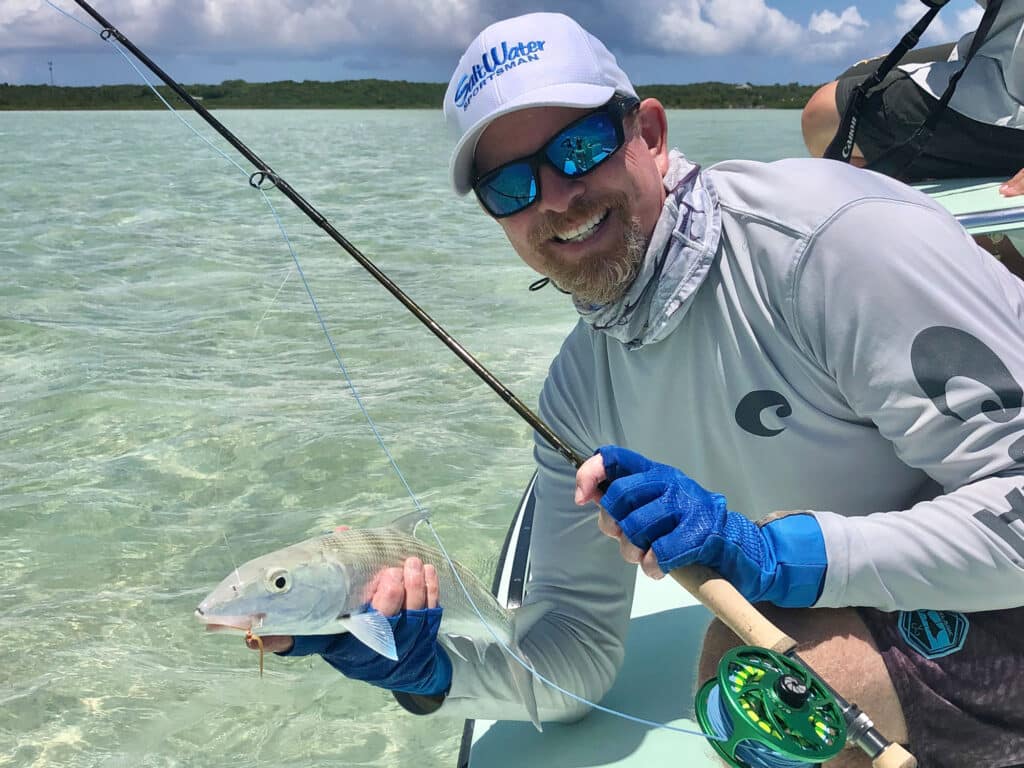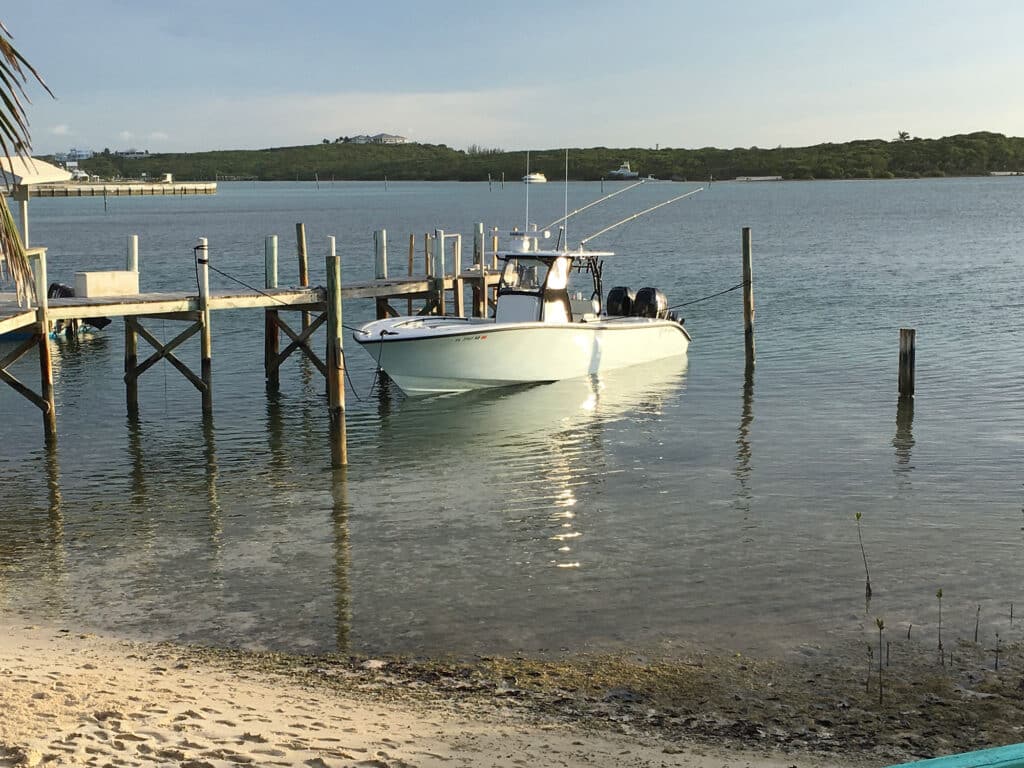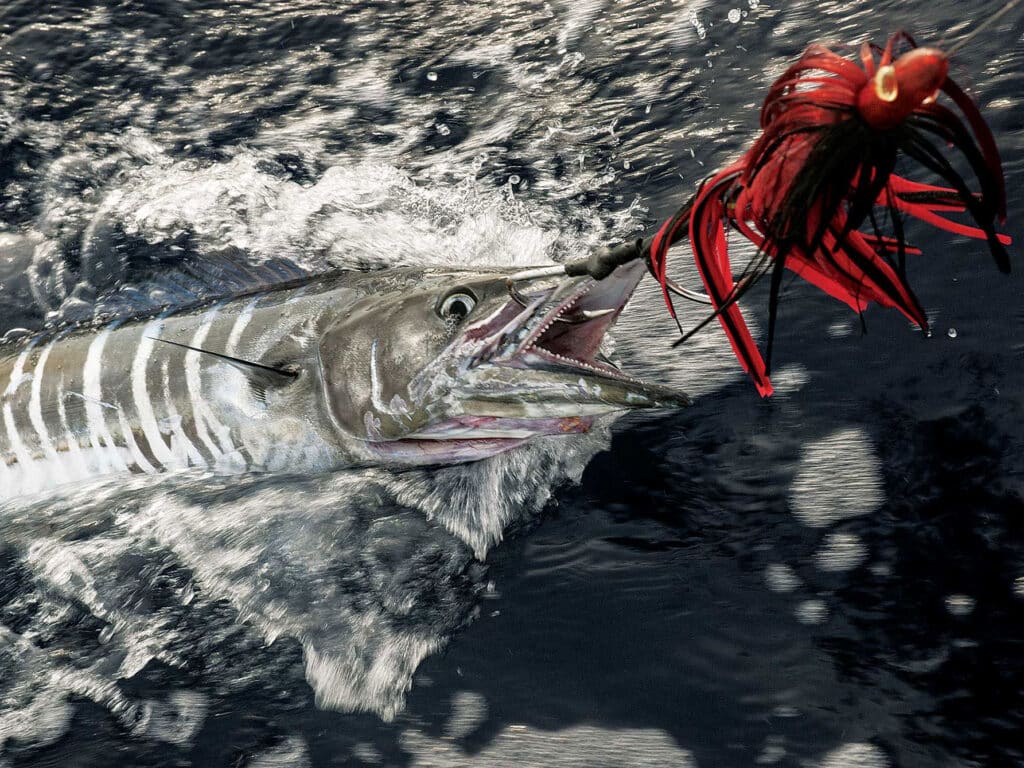
“Where else can you catch bonefish and permit in the morning and run a mile or so away to troll for wahoo?”
The variety of fish and fisheries that the Bahamas offers has kept Capt. Jon Cooper, with Contender Boats in Homestead, Florida, focused on fishing these waters his entire life. There’s no lack of exploration possibilities in the Bahamas, with more than 3,000 islands, cays and islets dotting 180,000 square miles of the Caribbean Sea.
From countless acres of flats and mangrove coasts to lush coral reefs to abyssal blue water, for fishing enthusiasts, it’s all here.
Many islands are familiar to anglers looking for great action — the Abacos (a 120-mile-long chain of over 650 square miles including the famed flats of the Marls), Andros (largest island but least developed — bonefish paradise), and Chub Cay and Bimini for both flats and bluewater fishing. Cooper mentions Great Harbour Cay as a hidden secret for bonefish, particularly with renowned guide Percy Darville.
Then there are the more distant eastern islands. These include Long Island, Cat Island, the Acklins and Crooked Island, plus San Salvador. It’s a long run to San Sal, in the southeastern fringes of Bahamas waters, but that island has “a special place in my heart” for Cooper. He says the residents are incredibly friendly. You can put your lures out right out of the marina to fish blue water which is known for monster wahoo — some of the biggest in the world — as well yellowfin (at the north end) and marlin. Near islands or distant, large or small, it’s pretty hard to go wrong when fishing the Bahamas.
Planning a Bahamas Trip

When to Go
The Bahamas offers plenty of fishing opportunities throughout the year. Still, there are peak times for many popular fisheries. If you’re after billfish (marlin — blues and whites), tuna (yellowfin and blackfin) and mahi, try to be there in spring and early summer. For wahoo, winter and early spring are hard to beat. In many areas, summer and fall offer the best action for bonefish and permit, though winter and early spring often produce some of the largest bones.
Reef fishing for grouper and snapper is productive all year, but spring through early fall in particular. Temperatures are always warm and skies tend to be clear most of the time. Winter will be windier. Summer and early fall, while calm and hot, is hurricane season. Odds are against having to deal with that, but still, unplanned evacuations aren’t impossible (and are better than being on hand when a category-5 storm — like Dorian in 2019 — threatens).
Where to Go and How to Get There
Airports at Nassau, Freeport, Marsh Harbour and Treasure Cay offer regular air service from the U.S. Bahamasair also offers flights to many smaller airports throughout the islands. Private air-charter service is readily available from several Florida cities. Many private boaters cruise to the islands from ports in Florida and other Southeastern states. The distance across the Gulf Stream from Miami to Bimini is 60 miles. Fully equipped marinas are located throughout the islands. Check here for a wealth of information on customs and entry.

What to Expect
Fishing on Bahamian charters with licensed skippers is the simplest and generally most productive means for day fishing. Anglers fishing from private boats must have a fishing permit (obtained when clearing customs) and be aware of limits, notably 18 pelagic species (tuna, wahoo, mahi, kingfish) per vessel per day and no more than 20 demersal fish (such as snapper and grouper) or 60 pounds in total. All billfish and sharks must be released (except in approved tournaments).
Bahamas Contacts
General information at bahamas.com. Also, myoutislands.com. For those planning to visit on their own hulls, considerable information is available here.









